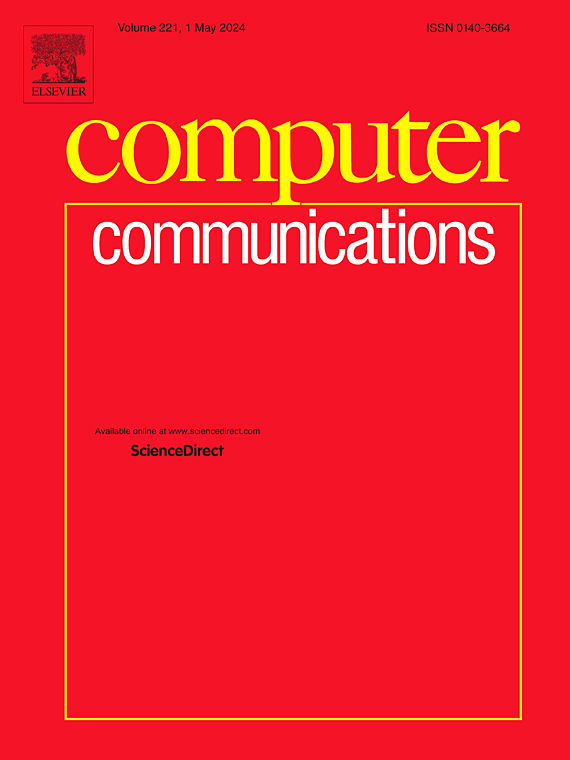物联网边缘网络互操作性
IF 4.5
3区 计算机科学
Q1 COMPUTER SCIENCE, INFORMATION SYSTEMS
引用次数: 0
摘要
网络互操作性对于实现跨物联网(IoT)环境的无缝通信至关重要。物联网包括支持不同技术、协议和制造商的异构设备和系统。无论底层协议如何,使设备能够有效地通信和交换数据是构建内聚和集成物联网网络的关键。通过利用通过云、雾和边缘层进行通信的大量传感器和执行器,物联网已经改变了从家庭自动化到医疗保健等多个行业。然而,设备制造和通信标准的多样性需要可互操作的接口,并且大多数当前的解决方案依赖于基于云的集中式架构。这些架构带来了延迟和可扩展性方面的挑战,特别是对于资源受限的物联网设备,由于资源有限,它们往往难以与云通信。本文讨论了物联网边缘层面的网络互操作性,重点关注通过集成Wi-Fi和蓝牙这两种物联网生态系统中常用的协议来实现资源高效通信。我们已经实现了一个网络边缘互操作性解决方案,支持在这些不同协议上运行的设备之间进行有效的数据交换,从而提高了物联网系统的整体效率、灵活性和可扩展性。我们的方法通过解决网络延迟和带宽限制来实现设备互操作,并结合集成控制器来促进更广泛的应用并提高物联网网络的性能。我们的研究结果说明了桥接协议差异如何能够培养更具弹性和适应性的物联网解决方案,从而推进物联网应用在不同领域和用例中的部署。本文章由计算机程序翻译,如有差异,请以英文原文为准。
IoT edge network interoperability
Network interoperability is crucial for achieving seamless communication across Internet of Things (IoT) environments. IoT comprises heterogeneous devices and systems supporting diverse technologies, protocols, and manufacturers. Enabling devices to communicate and exchange data effectively, regardless of underlying protocols, is key to building cohesive and integrated IoT networks. IoT has transformed multiple sectors ranging from home automation to healthcare—by harnessing a vast array of sensors and actuators that communicate through cloud, fog, and edge layers. However, the variety in device manufacturing and communication standards demands interoperable interfaces, and most current solutions depend on cloud-based centralised architectures. These architectures introduce latency and scalability challenges, particularly for resource-constrained IoT devices that often struggle to communicate with the cloud due to limited resources. This paper addresses network interoperability at the IoT edge level, focusing on resource-efficient communication by integrating Wi-Fi and Bluetooth, two commonly used protocols in IoT ecosystems. We have implemented a network edge interoperability solution that supports effective data exchange between devices operating on these distinct protocols, enhancing the overall efficiency, flexibility, and scalability of IoT systems. Our approach allows devices interoperate by addressing network latency and bandwidth limitations, incorporating an integrated controller to facilitate broader applications and enhance performance across IoT networks. Our findings illustrate how bridging protocol differences can foster more resilient and adaptable IoT solutions, advancing the deployment of IoT applications across various domains and use cases.
求助全文
通过发布文献求助,成功后即可免费获取论文全文。
去求助
来源期刊

Computer Communications
工程技术-电信学
CiteScore
14.10
自引率
5.00%
发文量
397
审稿时长
66 days
期刊介绍:
Computer and Communications networks are key infrastructures of the information society with high socio-economic value as they contribute to the correct operations of many critical services (from healthcare to finance and transportation). Internet is the core of today''s computer-communication infrastructures. This has transformed the Internet, from a robust network for data transfer between computers, to a global, content-rich, communication and information system where contents are increasingly generated by the users, and distributed according to human social relations. Next-generation network technologies, architectures and protocols are therefore required to overcome the limitations of the legacy Internet and add new capabilities and services. The future Internet should be ubiquitous, secure, resilient, and closer to human communication paradigms.
Computer Communications is a peer-reviewed international journal that publishes high-quality scientific articles (both theory and practice) and survey papers covering all aspects of future computer communication networks (on all layers, except the physical layer), with a special attention to the evolution of the Internet architecture, protocols, services, and applications.
 求助内容:
求助内容: 应助结果提醒方式:
应助结果提醒方式:


